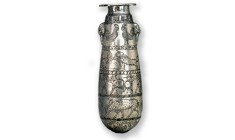Cultural Property in Transit
A Case Study of Hong Kong
Globalization, together with innovations in transportation and technology, has blurred the boundaries between nations. But as transnational movement of objects and people progressed at an unprecedentedly fast pace, regulation strategies lacked. This has facilitated the movement of illicit objects, among which cultural property.
Serving as a gateway to mainland China, Hong Kong is the one of the world’s most important financial and trade centres. Hong Kong is not part to either the 1970 UNESCO Convention or the 1995 UNIDROIT Convention, whereas China has enforced both of these international agreements in its national legislation. China maintains very stringent export laws when it comes to cultural property, whereas Hong Kong does not have any import restrictions other than those relating to cargo manifestation. This creates a convenient gap between the national legislations of two countries, one which some participants in the cultural property trade more than happily make use of.
This project will explore the structure and nature of the trade in cultural property in and out of transit nations, especially free ports. Interviews with various actors involved in the trade in cultural property in and out of Hong Kong, as well as documentary research, will shape a criminological ethnography of one of the most important transit cities in the world. This much-needed analysis of policy and governance regarding the cultural property trade in transit ports such as Hong Kong from a socio-criminological perspective will clarify the role of transit cities within the cultural property trade, and the circumstances that facilitate this role.
